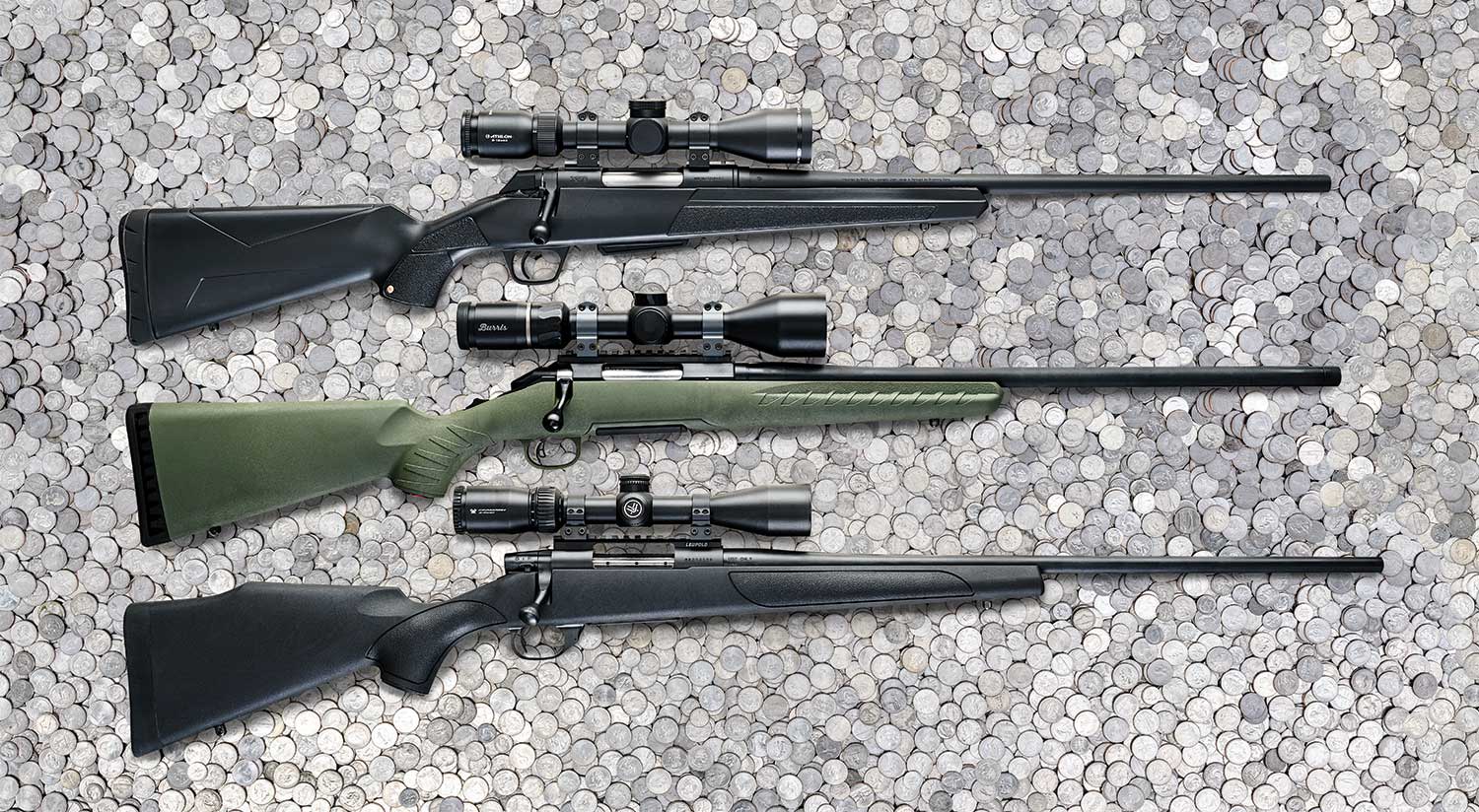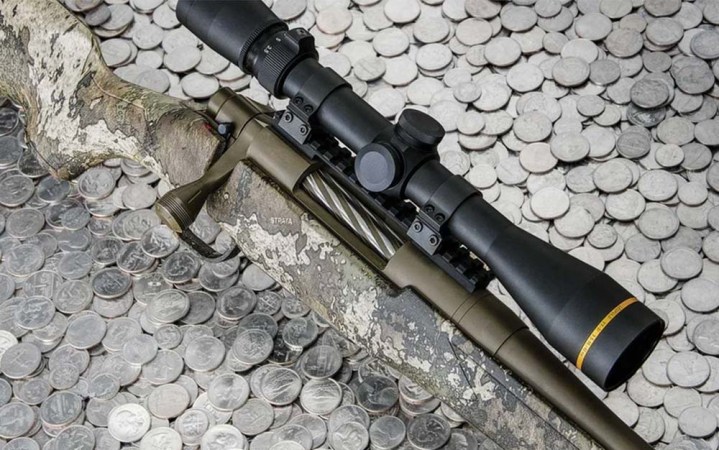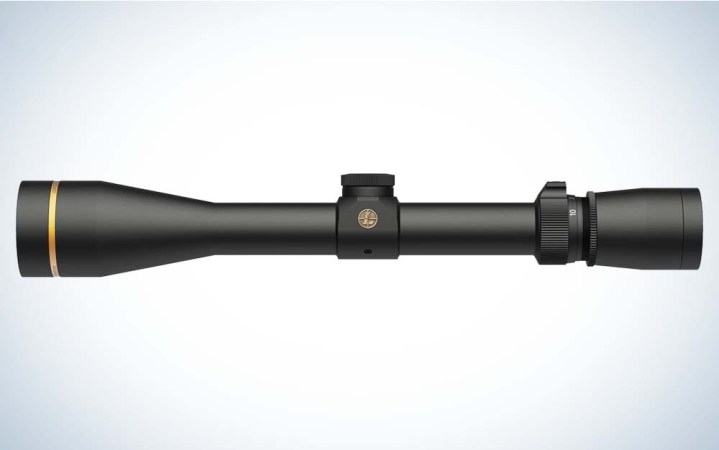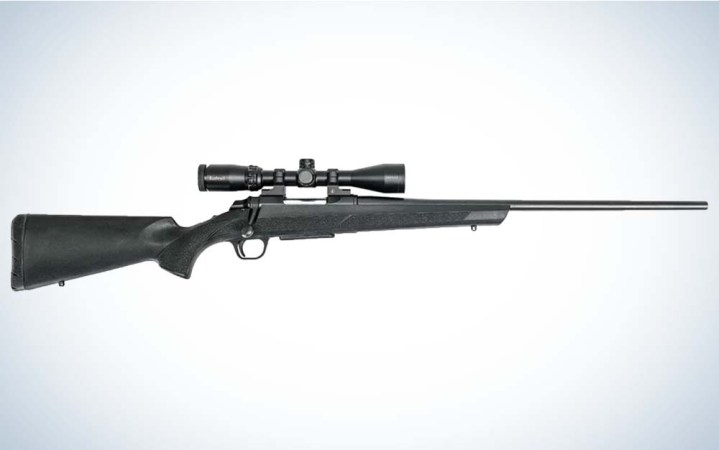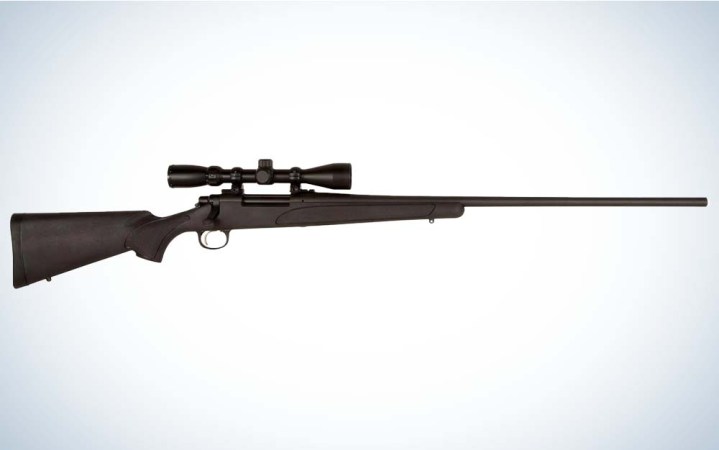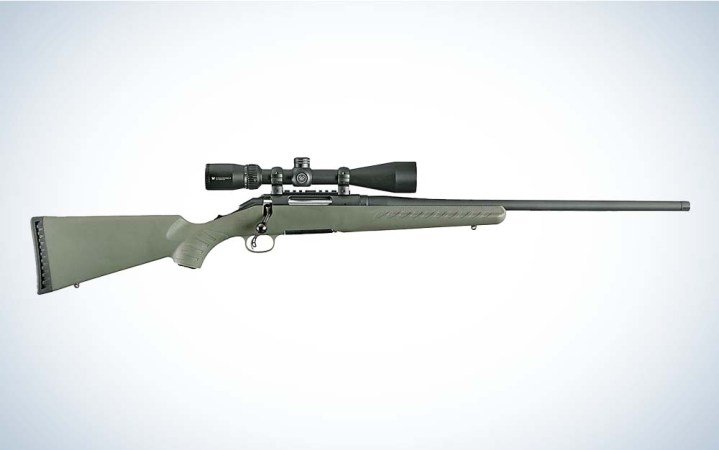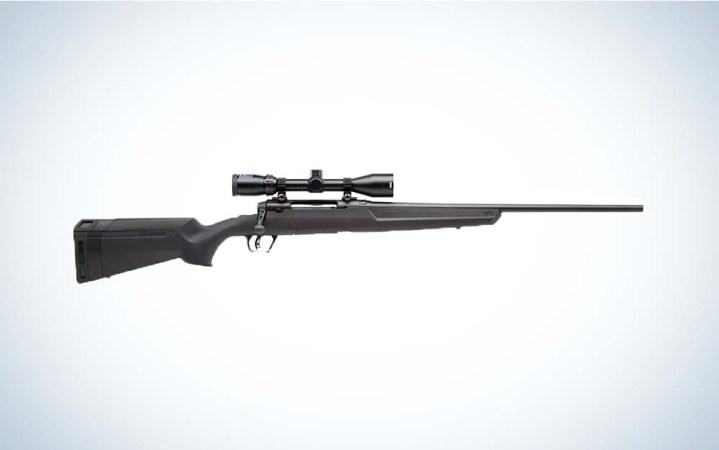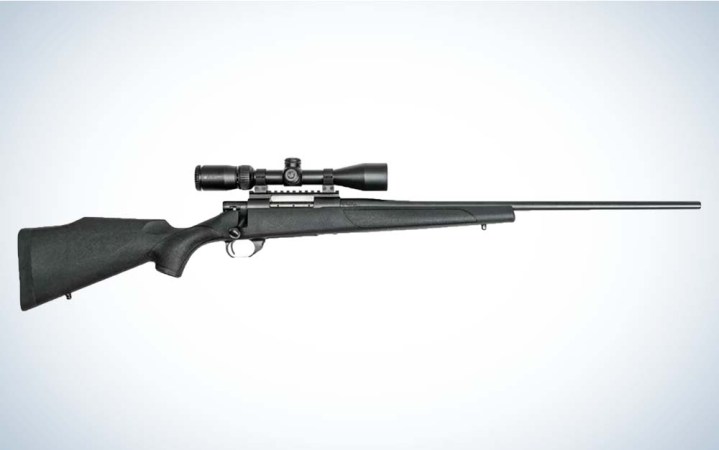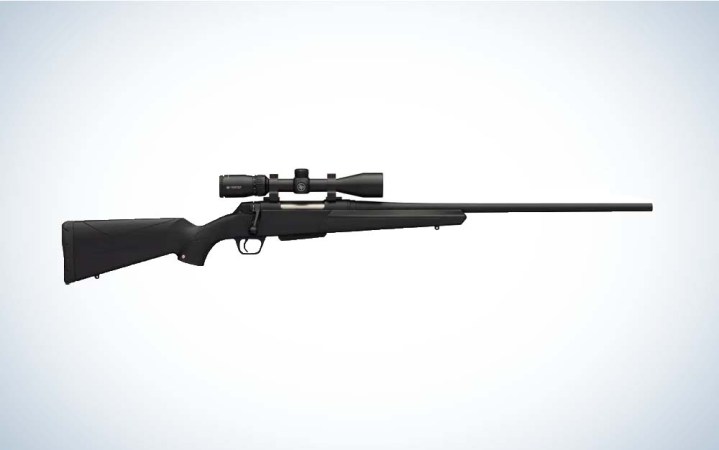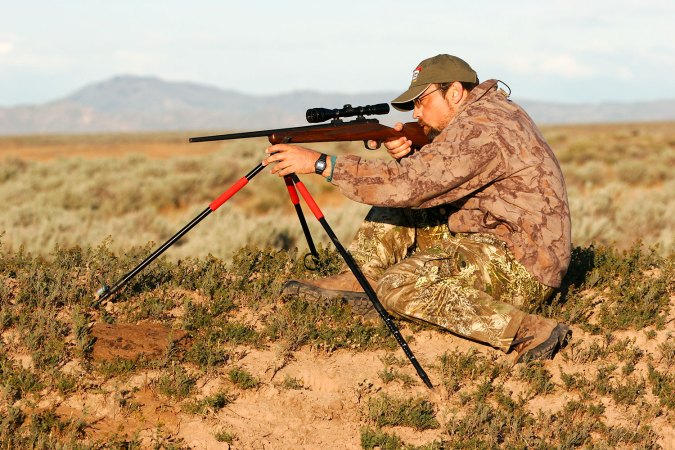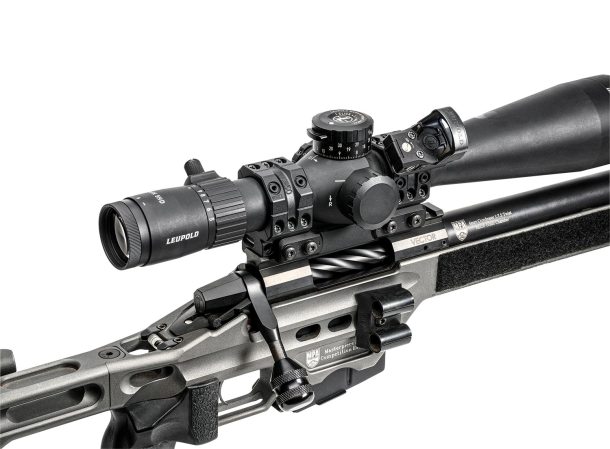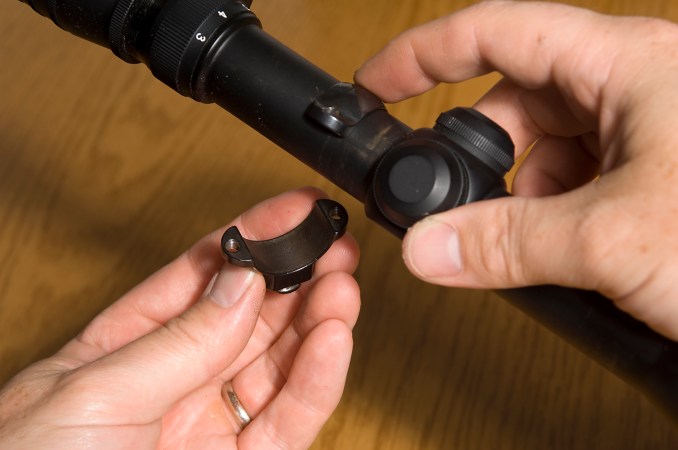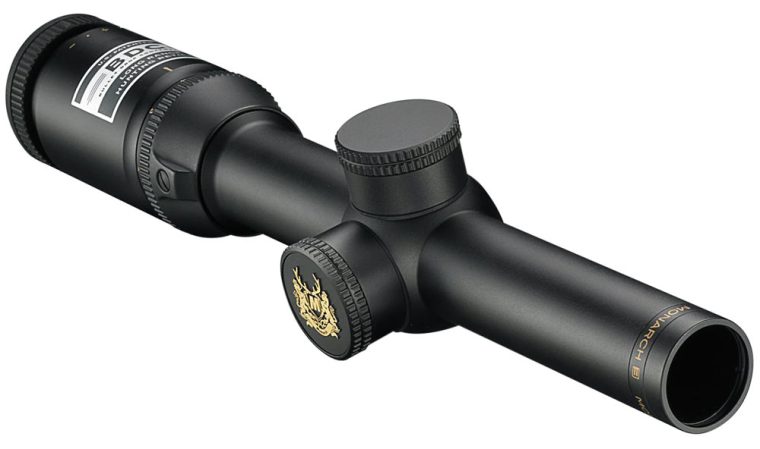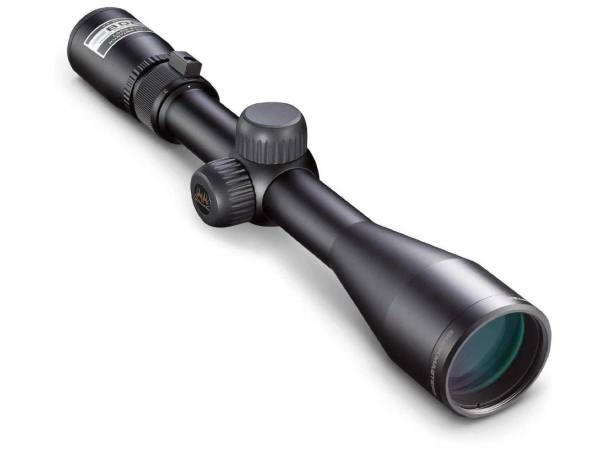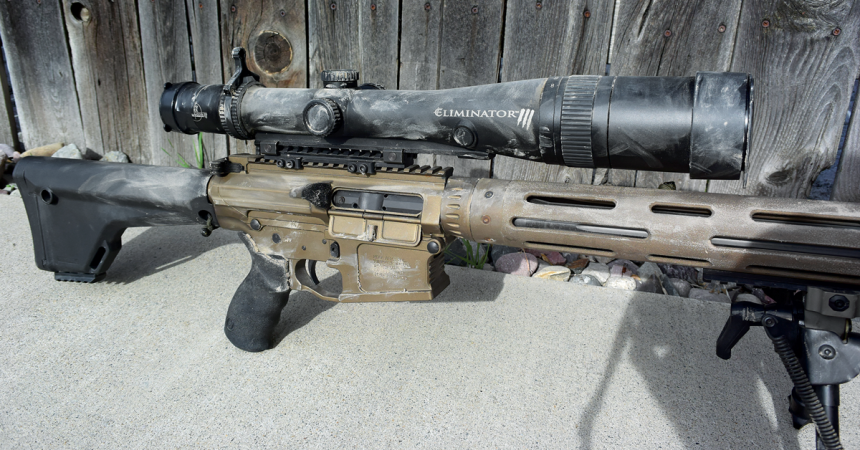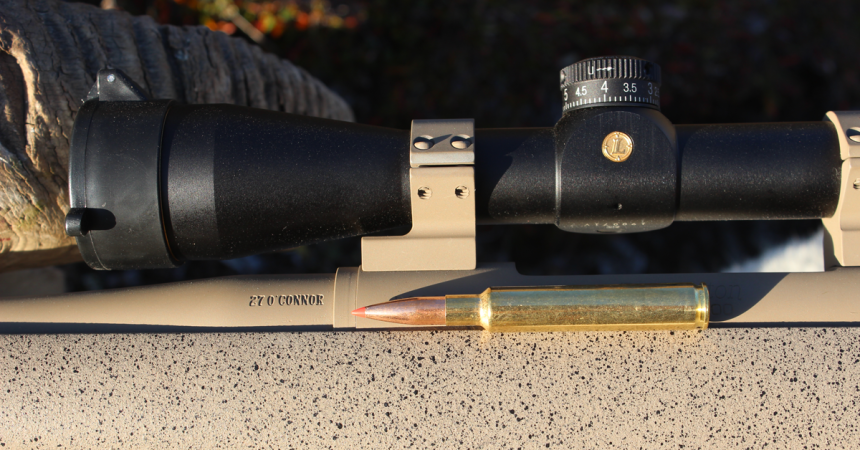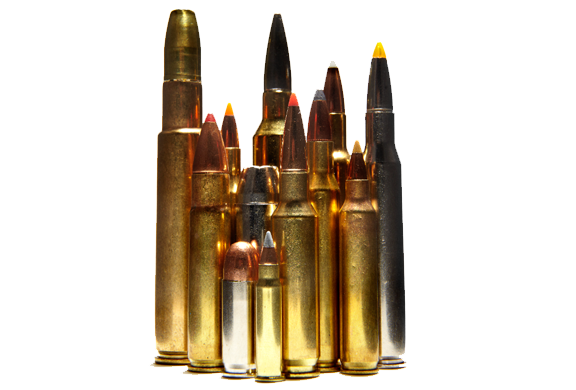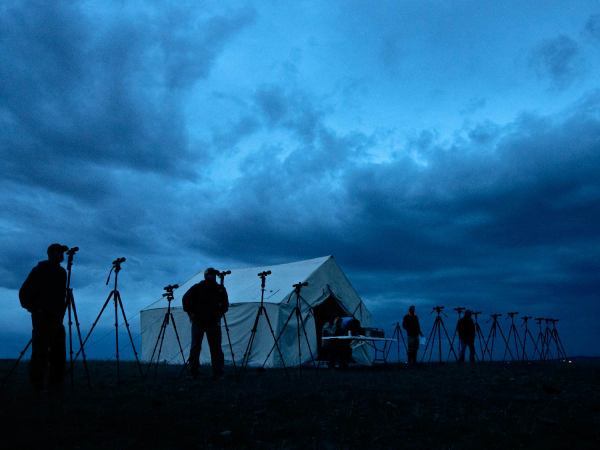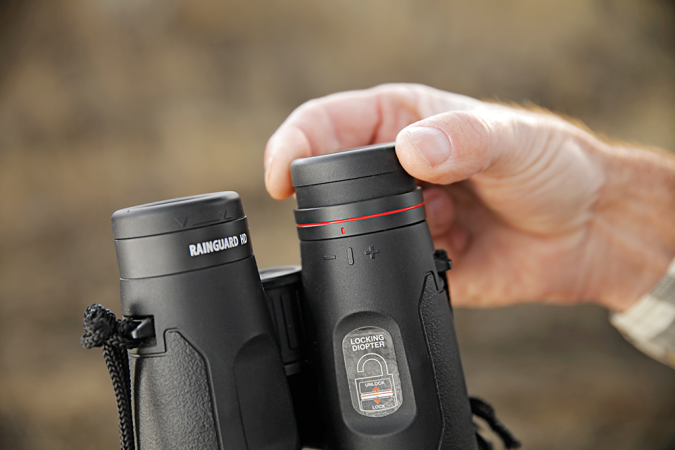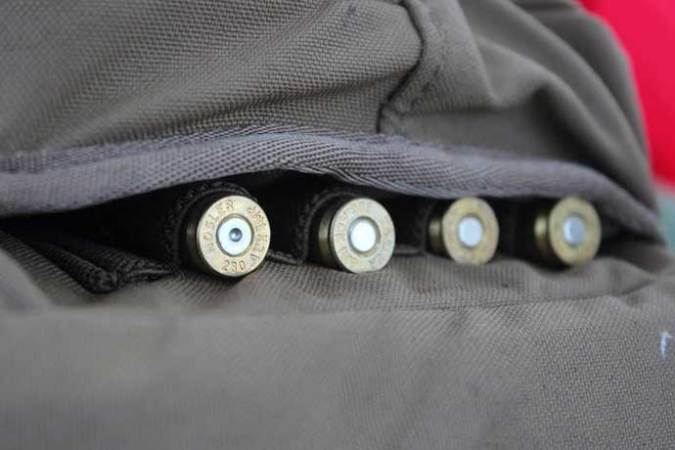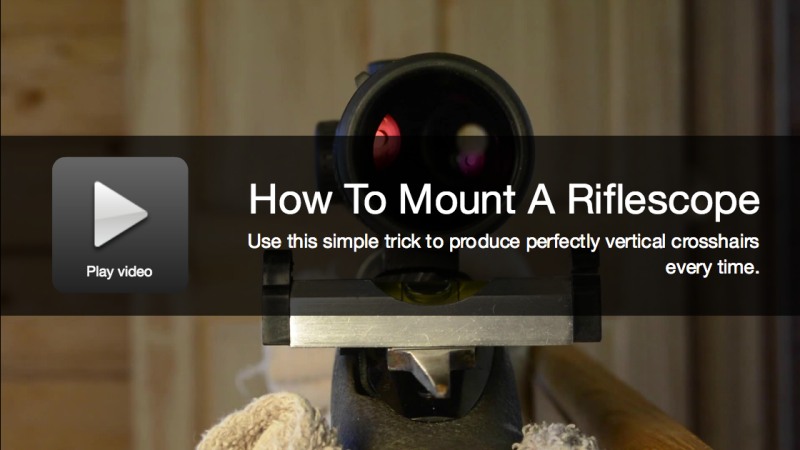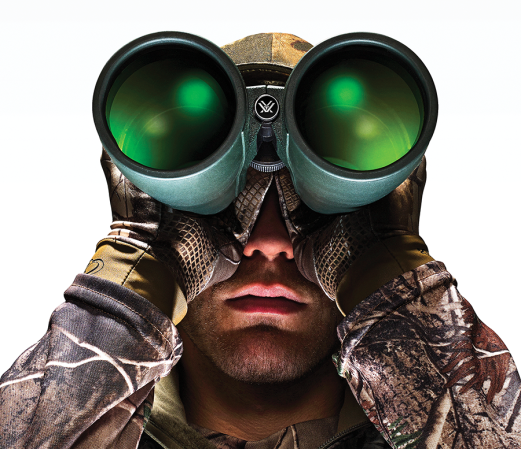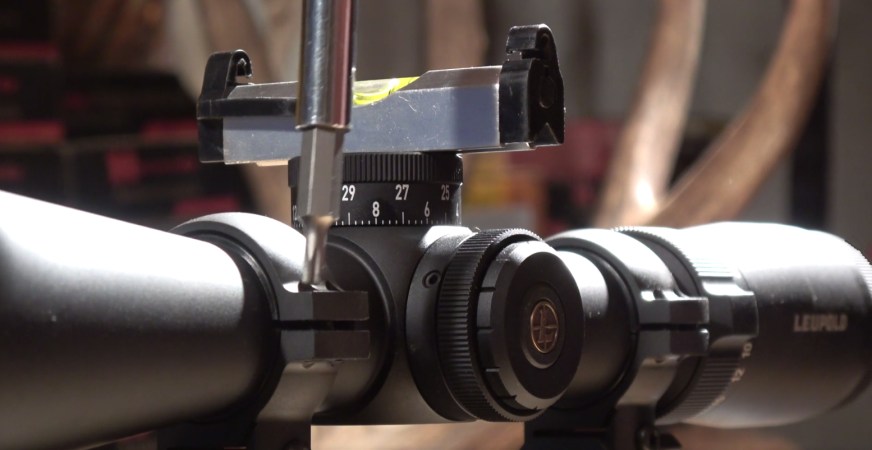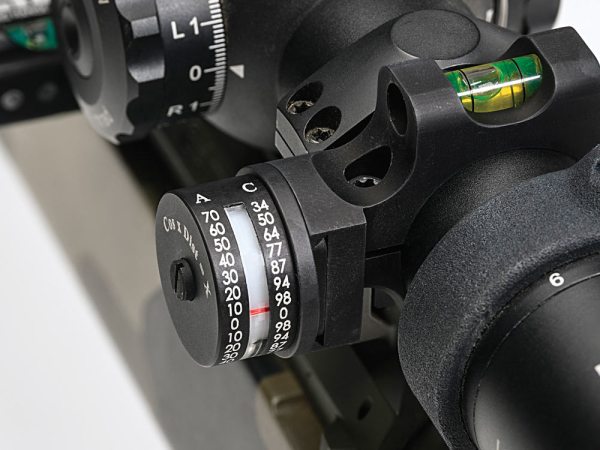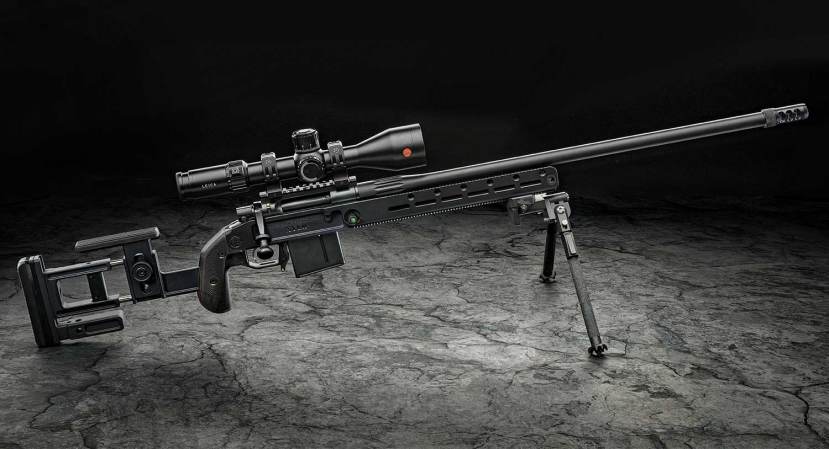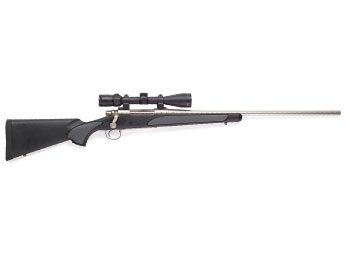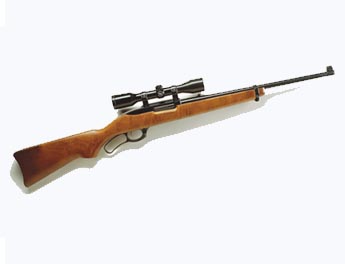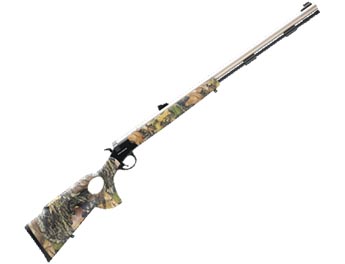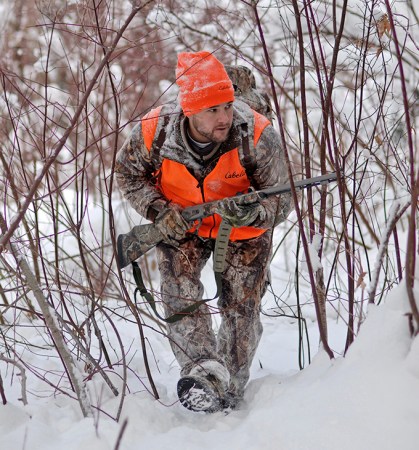We may earn revenue from the products available on this page and participate in affiliate programs. Learn More ›
We queried the leading outdoor manufacturers and had them send us their top-selling affordable big-game rifles, scopes, and ammunition and put them to the test. The goal was to showcase the best bargains for cost-conscious deer hunters and to give a real-world account of how these rigs perform. The final results were telling. All are capable whitetail rifles. What separated them wasn’t so much their accuracy—all shot pretty well—but rather their handling and ergonomics. We gave extra weight to rifles that came with extras, like scope bases (and in two cases, scopes), threaded barrels, and other money-saving features. This is a down-to-earth, honest evaluation of the rifles that make up the majority of new guns that hunters take afield each year.
Editor’s Choice: Mossberg Patriot Predator
- Weight: 6 lb. 11 oz.
- Trigger: 2 lb. 11 oz.
- Barrel: 22 in.
- Length: 42 1⁄2 in.
- Price: $557
When the dust settled, the Mossberg Patriot Predator was the top choice in this competitive field of firearms. It is a well-rounded rifle built for rough-and-tumble use that will serve you as faithfully as a Lab rescued from an animal shelter.
Here are some of the rifle’s best virtues. It’s fed by a five-round double-stack detachable magazine that is super easy to load, insert, and remove. The adjustable trigger on my sample broke at 2 pounds 11 ounces, an excellent weight for a general hunting rifle.
It was the second-most-accurate rifle in the test, with its five best 5-shot groups averaging 1.17 inches with standard deer ammo (see p. 117). What impressed me about that figure is that the smallest group was right at 1 inch, and it shot five different loads well enough to achieve that accuracy, an indication of the rifle’s versatility with respect to ammo choice.
The $557 MSRP is an excellent value for what you get. The rifle comes with a Picatinny rail for mounting optics, a threaded barrel, Cerakoted metal, and a camo finish. The stock has a raised cheekpiece and a rough texture molded into the fore-end and wrist that provides a secure grip.
The two-position safety is basic but functional, and easy to manipulate. And the rifle runs well from the shoulder, though the fluted 22-inch barrel gave it a slightly whippy feel during our off-hand drills. Extra weight from a muzzle brake might help there, but if Mossberg skipped the fluting, that would certainly improve its handling as well.
Though the two-lug bolt is a bit clunky, it runs with reliable assurance, kind of like a beater truck with a four-speed gear box.
Unlike some of the other rifles in the field, the Mossberg makes no pretense of elegance. But this is a roundup of hunting rifles, not a beauty contest, and that’s why it earned the Editor’s Choice award.
The other half of our Editor’s Choice award goes to the Leupold VX-3i 3.5–10×40, which optics editor Andrew McKean lauds for its hard-wearing reliability, good glass, and intuitive German duplex reticle. With its generous mounting dimensions and low-profile design, it is our top pick for a budget-priced scope. Though it lists at $520, you can find it for less than $400 online.
Browning AB3 Composite Stalker
- Weight: 6 lb. 10 oz.
- Trigger: 4 lb. 1 oz.
- Barrel: 22 in.
- Length: 42 in.
- Price: $599
This entry-level offering from Browning is the most expensive rifle in the roundup, and upon close examination you can see why. In terms of fit and finish, its only peer in this group is the Weatherby. The quality of the stock is excellent in light of the price, and small touches in its construction speak to a higher attention to detail.
Take the detachable box magazine, for instance. Like the Mossberg’s, it is an easy-to-fill, double-stack top-loader that holds five rounds, but most of the box is constructed of metal instead of plastic, improving its durability. This magazine was far and away the nicest of the bunch.
The tang safety on the stock is easy to manipulate and locks the bolt down when on “safe.” But there’s a small tab by the bolt that lets you open the action without putting it on “fire,” which is a nice feature.
In terms of accuracy, the AB3 struggled. The average of its five best 5-shot groups was 1.941 inches. It shot its best groups with Winchester’s Deer Season (1.595 inches) and Federal’s Non-Typical (1.836 inches).
With a 22-inch barrel and its 6-pound 10-ounce unscoped weight, the Composite Stalker is snappy and fast. The short throw of the bolt on the three-lug action enhances its quick-handling characteristics. And during the dynamic drills, the poor 8-inch steel plate I had at 100 yards didn’t stand a chance. The rifle cycled ammunition nearly flawlessly during the evaluation, the only minor hiccup being a round I single-fed into the action that hung up one time.
Remington Model 700 ADL Synthetic with Scope
- Weight: 7 lb. 8 oz. (scoped)
- Trigger: 4 lb. 15 oz.
- Barrel: 24 in.
- Length: 43 1⁄4 in.
- Price: $541
This rifle is an appealing package for hunters who want to get their hands on an honest-to-goodness Model 700 for a low price. And in that respect, it is a winner. Now, the fact that it comes with a scope might make it seem like an even better deal, but the glass that tops this rifle, a cheap 3–9×40, is so lousy that I cannot in good faith recommend it.
(I’ll spare you the gory details, but suffice it to say that the scope’s stingy eye relief, murky image, and sloppy controls make this a hard setup to love—kind of like when your buddy’s duck dog won’t stop whining on the four-hour drive to the marsh.)
But if you ditch the scope and mount a decent piece of glass, you can transform this rifle into a worthwhile deer gun.
The ADL has a blind magazine that holds four rounds of 6.5mm Creedmoor. Loading it to capacity was a bit rough at times—the cartridges would occasionally jam in the magazine while being loaded.
The stock itself is very good. It has a raised cheekpiece, is nice-looking, has effective grip panels, and is stiffer than most of the others in this field.
At 7 1⁄2 pounds scoped, the rifle hits a sweet spot for weight and balance, and it handled well during our battery of shooting drills. The 700′s famous two-lug action cycled everything we put through it.
During the accuracy testing, its five best groups averaged 1.25 inches, and it turned in a .917-inch group and a 1.037-inch group with Winchester’s 125-grain Deer Season.
Ruger American Rifle Predator
- Weight: 6 lb. 11 oz.
- Trigger: 4 lb. 3 oz.
- Barrel: 22 in.
- Length: 42 in.
- Price: $529
The most impressive thing about the Ruger American Rifle is how much innovation is crammed into such an affordable package. Located beneath the hood, so to speak, is what Ruger calls its Power Bedding system, a group of four angled bedding blocks that slot into grooves in the receiver so that when the screws are tightened, it takes an immoveable set. When it comes to accuracy, this is a very good thing indeed.
Then there’s the fast-running three-lug bolt, which features dual cocking ramps, making the bolt easier to lift after firing than most three-lug systems. When it comes to making a smooth-running rifle, this too is a very good thing.
The Predator model includes a Picatinny rail, a threaded muzzle, and a nice green synthetic stock with ridges molded into the fore-end for a solid handhold. It runs off a well-designed four-round detachable magazine and has an adjustable trigger.
Off the bench, the rifle turned in some of the best groups of the test, including two sub-MOA clusters with Federal’s Non-Typical 140-grain soft points (.674 inch and .973 inch). The rifle’s five best groups averaged 1.18 inches.
The rifle was a little picky when it came to single-feeding rounds. Some would get jammed in the action, though it managed to digest Winchester’s Deer Season loads without any issues.
Otherwise, the rifle ran great during the other drills, cycling, feeding, and ejecting like a champ. With its 22-inch barrel and trim 6-pound 11-ounce weight, the rifle is handy, nimble, and a very capable deer gun.
Read Next: 24 Best New Rifles and Shotguns of the Year
Savage Axis II Scope Combo
- Weight: 7 lb. 5 oz. (scoped)
- Trigger: 6 lb. 13 oz.
- Barrel: 22 in.
- Length: 42 3⁄8 in.
- Price: $429
Former CEO Ron Coburn brought Savage Arms back from the dead in 1988, and in doing so helped the company gain a reputation for affordable accuracy that left the rest of the gun industry eating its dust for many years.
One of the last rifles produced under his watch was the Axis. He confessed to me that he didn’t care for it, since it was engineered to hit a rock-bottom price point at the expense of ergonomics. Despite his reservations, it has become a best seller.
The Axis II Combo comes with a 3–9x40mm Weaver-branded scope and was the least expensive rifle in the test. It also happened to be the most accurate rifle we shot, with its best five groups averaging 1.02 inches.
In light of that, how could it have failed to win this shootout? In a word, the trigger.
The stiff, heavy pull of the Axis’ trigger made it a chore to shoot well off the bench and all but impossible to shoot competently off-hand and from other unsupported positions. This deficit kept it from the winner’s circle.
I would suggest that if you’re shopping around for a deer gun and happen across an Axis, check the trigger in person. You might find it agrees with you, in which case you probably have a great bargain on your hands.
The two-lug action cycles pretty smoothly. My rifle single-fed cartridges just fine. The three-round detachable magazine is a little stiff to load but otherwise is perfectly capable. The broad, beavertail-like safety is less ergonomic than that on other rifles here, but is still functional.
Weatherby Vanguard Select
- Weight: 7 lb. 6 oz.
- Trigger: 4 lb. 4 oz.
- Barrel: 24 in.
- Length: 43 7⁄8 in.
- Price: $549
The Vanguard series has long been a standard-bearer in the upper echelon of budget-priced guns. What it lacks in extras it makes up for in elegance and overall fit and finish. The Select is the most basic in the Vanguard line.
The heart of all Vanguards is the barreled action made in Japan by Howa. It first entered production in 1979, and has proven itself over the decades to be reliable and accurate.
The Vanguard is the only rifle in our field with a hinged-floorplate magazine, a sophisticated touch that separates it from the crowd. It holds 4+1 rounds of 6.5mm Creedmoor and is fairly easy to load. It also comes with a three-position safety, which allows the shooter to open the bolt without putting the safety on “fire.”
During the dynamic shooting drills, the Vanguard stood out. The action was one of the smoothest in the test, and it ran without any hiccups. It was also able to single-feed rounds flawlessly, which offers a bit of reassurance in case you shoot your rifle dry.
The trademark Monte Carlo stock, with its reverse-slope comb, is comfortable and mitigates the amount of cheek slap the shooter experiences under recoil, and is part of the reason the rifle handles so well.
I’ve owned and hunted with many Vanguards over the years, and typically they’ve all been tackdrivers. This particular sample averaged 1.44 inches for its five smallest 5-shot groups, with a 1.299-inch group from Federal’s Non-Typical 140-grain soft point being the best.
Winchester XPR
- Weight: 6 lb. 13 oz.
- Trigger: 4 lb. 4 oz.
- Barrel: 22 in.
- Length: 42 in.
- Price: $549
The base-model XPR is a solid deer rifle at a good price. It doesn’t have much in the way of extras—you don’t get scope bases, a threaded muzzle, a camo stock, or any special weather-resistant coatings on the metalwork. But what it does bring to the table is reliable functioning, good ergonomics, and reasonable accuracy.
The single-stack magazine holds three rounds, and though it protrudes slightly below the stock, it doesn’t prohibit one-handed field carry. The magazine loads easily and clicks into place without a fuss. It smoothly feeds cartridges into the three-lug action, which, thanks to the full-diameter bolt body, glides slickly up and down the receiver. The short bolt throw lets the shooter run the gun with quick assurance.
Though the trigger pull is more than 4 pounds, the break is clean and crisp with minimal creep, so maintaining control of the rifle is easy.
This was particularly apparent during dynamic shooting drills. I had no problem running the XPR off-hand and ringing steel plates at 100 yards.
A couple of times during the test, the XPR had issues single-feeding
cartridges, but only with Hornady American Whitetail ammo.
The XPR’s average of its five best 5-shot groups was 1.38 inches, with the tightest groups coming from Federal’s Non-Typical 140-grain soft point (1.005 inches) and Hornady’s 143-grain ELD-X (.880 inch).
One extra the XPR does incorporate is a tab that unlocks the bolt so you can unload the rifle while it is on “safe.”
Best Deer Scope Bargains
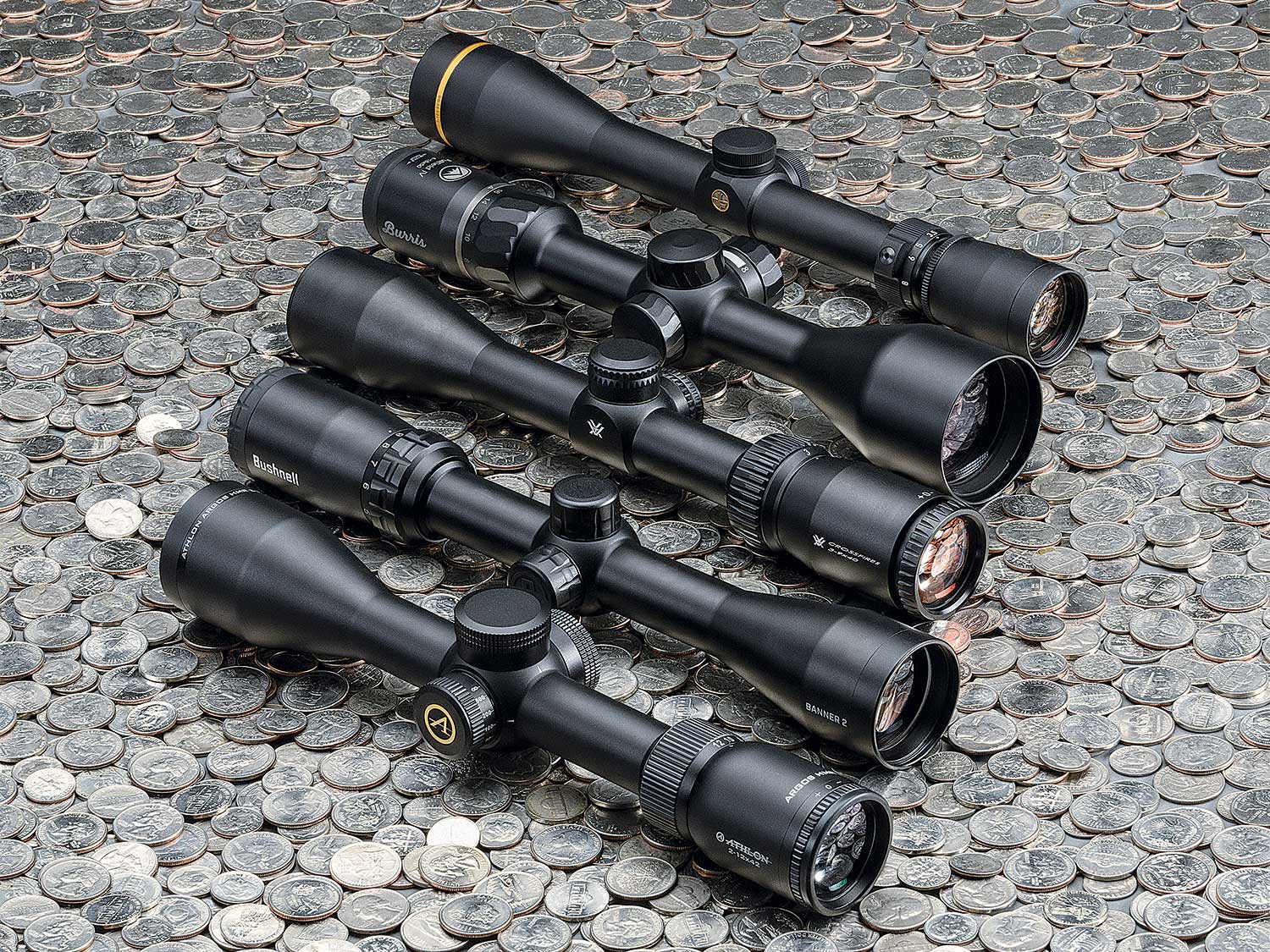
Only a few years ago, it was easy to pick the top riflescope brands on the market. Leupold, Bushnell, and Nikon dominated, and the category leader changed according to which of the three brands had the sexiest new flagship scope and the most aggressive marketing campaign in any given year.
That’s mostly changed. Earlier this year, Nikon announced it was exiting the riflescope category. Bushnell has abandoned its higher-end product lines, and a mass of ambitious brands are scrambling to take market share in what’s become one of the most competitive product categories in all of shooting and hunting.
To get some clarity, we asked Southwick & Associates, a leading market-research group, to share with us the top-selling optics brands, based on their extensive surveying of shooters and hunters. Over the past couple of years, Vortex has taken the top spot, followed by Leupold and Bushnell. No other brand commands more than about 2 percent of market share, according to Southwick.
Vortex’s most popular seller is the Crossfire II 3–9×40, a $200 second-plane versatile scope containing what Vortex calls its Dead-Hold BDC reticle, a simple hash holdover reticle tuned to MOA references. Like most of these center-of-mass riflescopes, the Crossfire II is built on a 1-inch tube, with a 3X magnification range. Riflescopes in this field are by definition versatile, configured to match a variety of rifle actions, and with simple, second-focal-plane reticles and capped turrets.
Leupold’s best seller is the VX-3i 3.5–10×40 with a simple duplex reticle. It retails for a bit more than $500, but is built around the best glass in this scope category. It also comes with an effective coating called Twilight Max that enhances contrast in low-light situations, which gives it a measurable boost—as we’ve seen in our optics tests over the years—with target visibility.
The Banner, from Bushnell, has been a best seller for years and dominates the sub-$100 field. Retailing for only $90, the Banner 2 contains what Bushnell calls the Quick Ballistic Reticle, a simple bullet-drop-compensating reticle with holds out to 500 yards based on a 100-yard zero.
Burris has been taking market share with a new iteration of the venerable Fullfield line. The new Fullfield IV scopes range in price and amenities, but Burris’ best seller is the 4–16×50 with a BDC reticle tuned to the ballistics of the 6.5 Creedmoor. That version retails for $419.
Lastly, upstart Athlon is gaining traction with a full line of scopes priced from under $100 to well over $1,000. Their best seller is the 2–12×42 Argos HMR with a 600-yard BDC reticle. At $375, it is one of the only scopes in the category with parallax focus. —Andrew McKean
Read Next: Is Premium Hunting Ammo Worth the Price?
Budget Deer Ammo
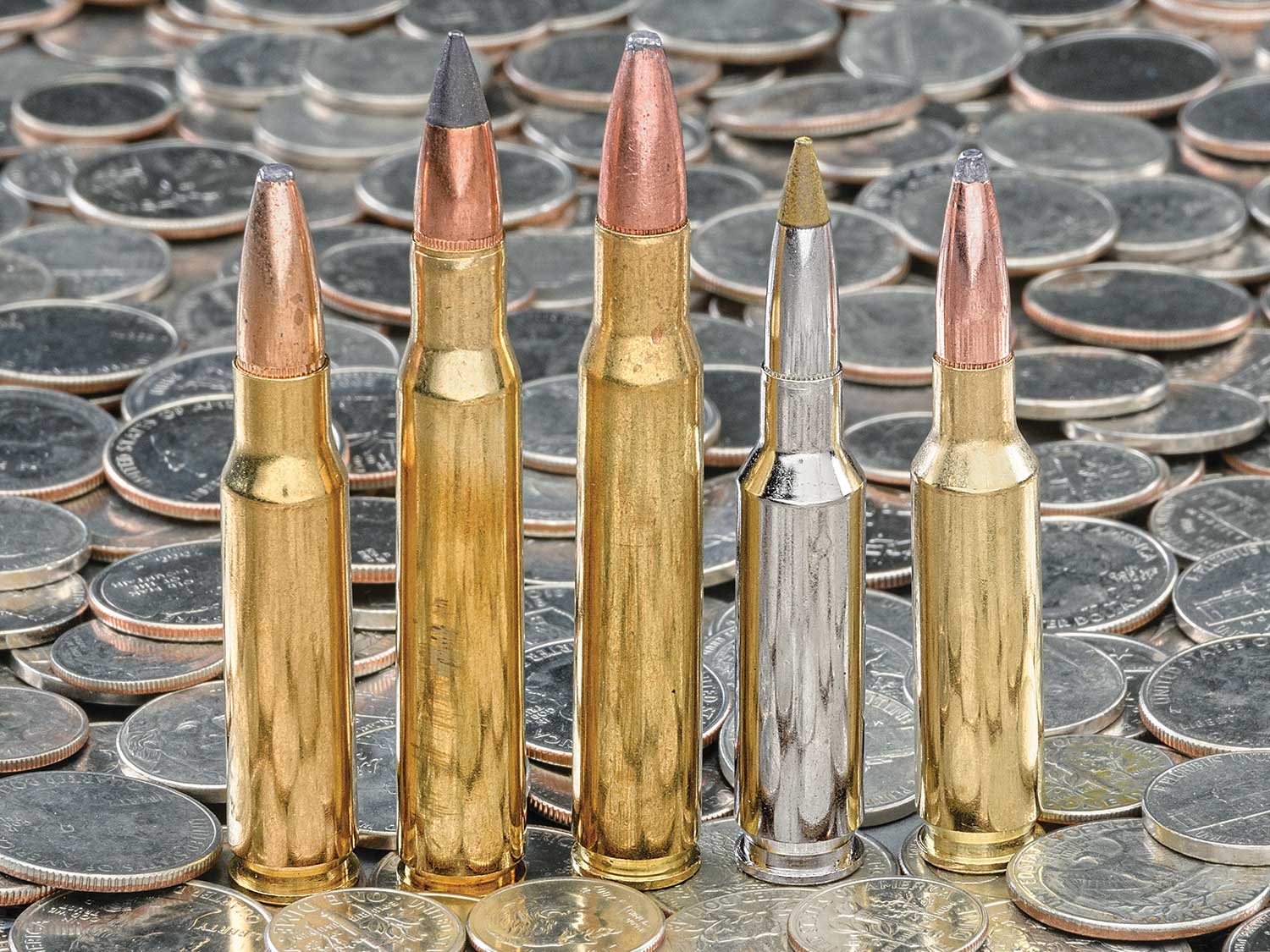
In the spirit of this evaluation, most of the ammo we put downrange was bread-and-butter deer loads. For each rifle, we recorded data that consisted of multiple 5-shot groups of the following: Federal Non-Typical 140-grain soft point, Hornady American Whitetail 129-grain Interlock, Winchester 125-grain Deer Season, Nosler 120-grain Ballistic Tip, and Browning 129-grain BXS, which was the only nonlead, copper-alloy round in the test.
In addition to these basic offerings, we shot select groups of premium hunting and match ammo through the rifles.
All the rifles were chambered in 6.5mm Creedmoor. When gathering the rifles for the test, I asked the manufacturers to send me their best-selling (by volume) affordable big-game rifle in the most popular chambering they produce. It just so happened that every one was in 6.5mm Creed, which goes to show how quickly this relative newcomer (introduced in 2007) has come to dominate the hunting market.
Among these loads, two that stood out were Winchester’s Deer Season and Federal’s Non-Typical. I measured each ammo’s five smallest 5-shot groups, and Deer Season averaged .096 inch, just .05 inch better than the Non-Typical’s 1.01-inch average.
Accuracy like that makes a rifle capable of clean killing shots to 300 yards and beyond.
The results for the rest of the field were as follows: Nosler 120-grain BT at 1.40 inches, Hornady American Whitetail 129-grain at 1.64 inches, and Browning BXS at 1.69 inches. While those figures won’t win you bragging rights on the internet, they will be more than adequate for shots within 300 yards.
It’s also worth noting that Outdoor Life’s 5-shot protocol is a much more demanding standard than the 3-shot groups that most hunters employ—particularly when shooting rifles with sporter-weight barrels that heat up quickly. If I had shot and measured 3-shot groups, the accuracy figures would be much smaller.
All the bullets in these hunting loads are designed to expand rapidly and retain the bulk of their weight as they penetrate. The Nosler Ballistic Tip will upset more readily and violently than the others here, but is still a capable projectile for any deer-size game.
Interlock and Non-Typical are traditional soft-point designs that have been knocking deer over for more than 100 years, while Deer Season and BXS have polymer tips, which help the bullets fly more aerodynamically and also help initiate bullet expansion.
Assuming that civilization hasn’t crumbled into a smoking ruin and that ammo has become more readily available by the time you read this, these basic loads can be found for about $20 to $25 for a box of 20 either online or in stores. —J.B.S.

